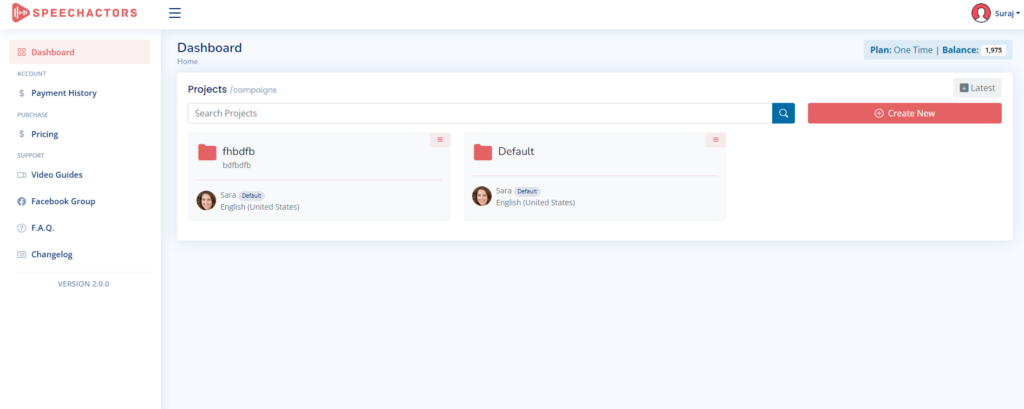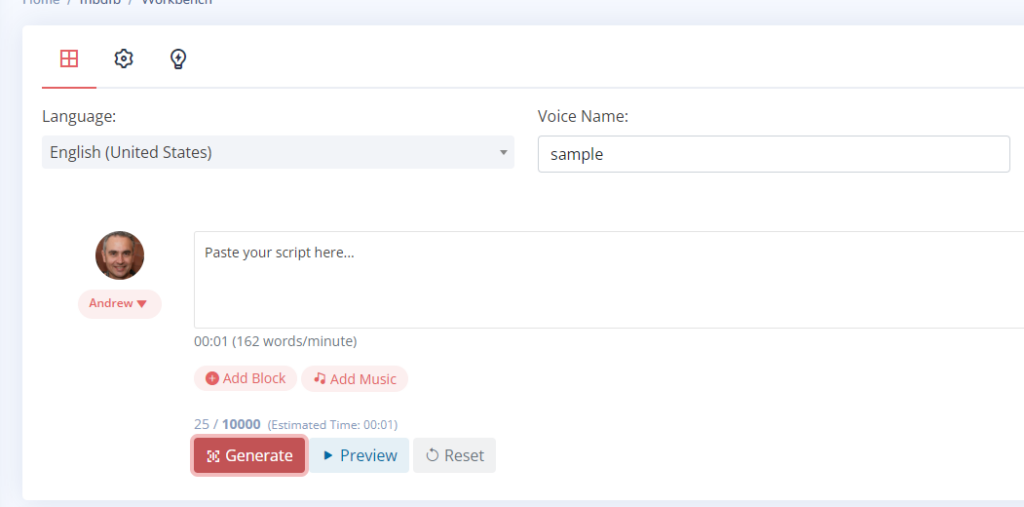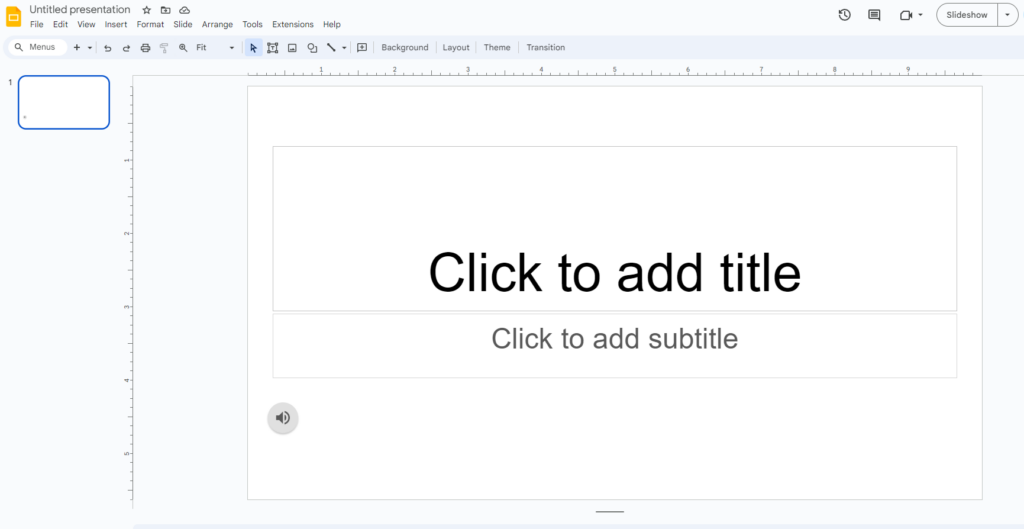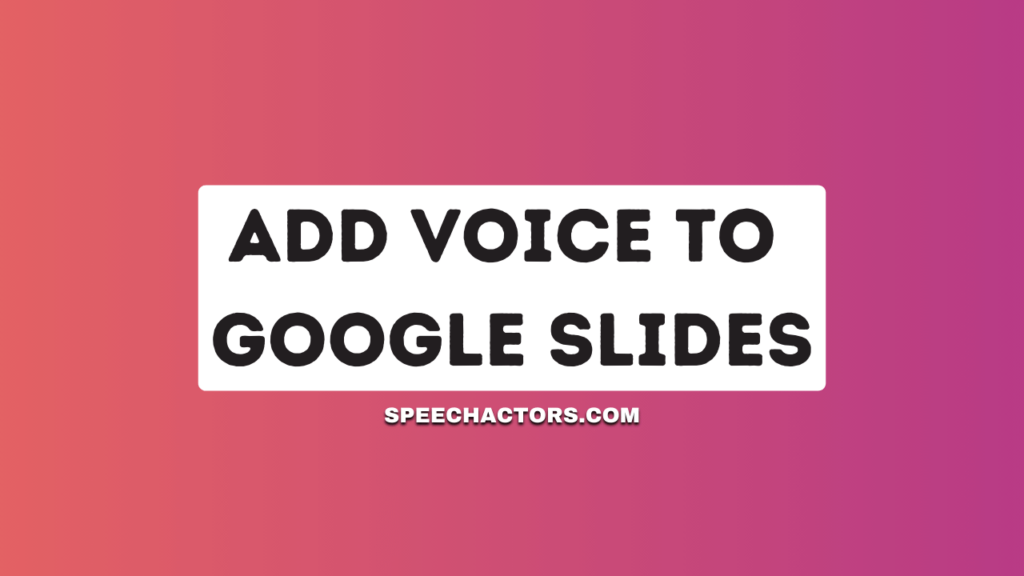Are you looking to add some voiceover to your Google Slides presentation? That’s a solid move. Adding voice can make your slides come alive and keep your audience engaged.
In this article, we will explain how you can add voice to Google Slides. We’ll cover the different methods you can use, from simple voice recordings to using third-party tools.
No tech knowledge is needed, just some straightforward steps. Ultimately, you’ll be adding voice to your slides in no time.
Why Add Voice to Google Slides?
Think of it as your virtual self, walking people through the slides when you cannot do it in person. Adding voice to Google Slides can significantly enhance your presentations.
It provides an engaging way to convey information, making your slides more dynamic and appealing. With voice narration, you can explain complex concepts more clearly, ensuring that your audience grasps the content effectively.
Moreover, voice narration in Google Slides offers accessibility benefits. It accommodates individuals with visual impairments by providing an alternative way to access the content.
This inclusivity is essential for ensuring that your presentations reach a broader audience. Additionally, it saves time, as you can convey information more efficiently through spoken words than by relying solely on text.
A voiceover can add context and clarity to the information on the screen.
Tools You Need Add Voice to Google Slides
You’ll need a Google account and access to Google Slides, of course. Also, grab a good-quality microphone. Your laptop’s built-in mic could work, but an external one will give you better sound quality.
Make sure your microphone delivers clear audio quality to ensure your narration is easily understandable.
Next, you’ll need recording software or apps to record and save your voice narration. Many options are VoiceOver tools available, from free applications like Audacity to more advanced tools like SpeechActors.
Choose one that suits your needs and budget. Additionally, you might want a voice-over script or notes to guide your narration as you move through your slides.
With these tools, you can efficiently add voice to your Google Slides presentations, enhancing their impact and engagement.
Steps to Add Voice to Google Slides
Step 1. Record Your Voice: First up, record your voice. You can use any software like Audacity or even your smartphone. Just hit record, read out your script or points, and save the file.
Step 2. Upload to your Google Drive: Once you’ve got your audio file, upload it to Google Drive. Right-click on it, go to ‘Get a link,’ and ensure the link sharing is set to ‘Anyone with the link.’
Step 3. Insert Audio in Slides: Open your Google Slides presentation. Go to the slide where you want the voiceover. Click on ‘Insert’, then ‘Audio’. This will open a panel on the right where you can choose your uploaded audio file.
Step 4. Fine-Tune Settings: After you insert the audio, you’ll see a little speaker icon on your slide. Click it, and you’ll get some options for start and stop, loop, and volume. Tweak these as needed.
Step 5. Test It Out: Play the slide to test that the audio works as you want. If all looks good, you’re set!
Another Method to Add Voice to Google Slides
Step 1. Prepare Your Script: Before you start, have the text you want converted to speech ready.
Step 2. Open SpeechActors: There are several online Text-to-Speech tools available. Using SpeechActors to add voice is a popular choices, and then log in to create new project. Or you can use other tools like “Natural Readers” or “TTSMp3”.

Step 3. Enter Your script: Copy and paste your script into the TTS tool.

Step 4. Select a Language and Voice: Most TTS tools will allow you to select the language and tone or style of the voice.

Step 5. Convert to Audio: Click on the ‘convert’ or similar button on the TTS tool. It will process your text and generate an audio file.

Step 6. Download the Audio File: Once the TTS tool has converted your text, there should be an option to download the resulting audio file, typically in MP3 format.

Step 7. Upload Audio To Google Drive: Once you download your audio, make sure to save your audio to your drive.

Step 8. Open Your Google Slides Presentation: Go to Google Slides and open the presentation where you want to add the voiceover.

Step 9. Insert VoiceOver: Click ‘Slide’ in the top menu, then select ‘Background Music’ or ‘Insert’ and ‘Audio.’ This will allow you to upload the MP3 file you downloaded.

Step 9. Adjust VoiceOver: Play your slide to ensure that the voiceover starts at the correct time and sounds as you expect.

Once satisfied, save your presentation. You can now share it with others, and when they play the slides, they’ll hear your voiceover.
7 Tips for Effective Voiceovers
1. Script Preparation: Before recording, script your voiceover carefully. Outline what you want to say for each slide, ensuring it’s concise and relevant. A well-structured script helps you stay on track and deliver your message effectively.
2. Practice and Rehearse: Practice reading your script aloud multiple times to become familiar with its flow. Rehearsing helps you sound more natural and confident during the recording.
3. Clear Pronunciation: Enunciate your words clearly and avoid speaking too fast. This ensures your audience can understand every word you say, especially if English is not their first language.
4. Tone and Emphasis: Vary your tone to match the content. Use a more enthusiastic tone for exciting topics and a calmer tone for serious subjects. Emphasize key points to highlight their importance.
5. Pauses: Incorporate short pauses between sentences or ideas. This gives your audience time to process the information and prevents your voiceover from sounding rushed.
6. Background Noise: Record in a quiet environment to minimize background noise. Use noise-canceling tools or software to enhance audio quality if necessary.
7. Sync with Slides: Ensure that your voiceover is synchronized with your slides. Time your narration to match the content on each slide, providing a seamless viewing experience.
By following these tips, you can create compelling voice overs that enhance your Google Slides presentations and effectively convey your message to your audience.
Conclusion
We’ve talked about how to add voice to your Google Slides. This is a neat and fastest way to make your presentations more lively.
Now that you know how to do it, why not give it a try? Adding voice can make your slides way more interesting. So go ahead and add some audio to your next Google Slides presentation.
